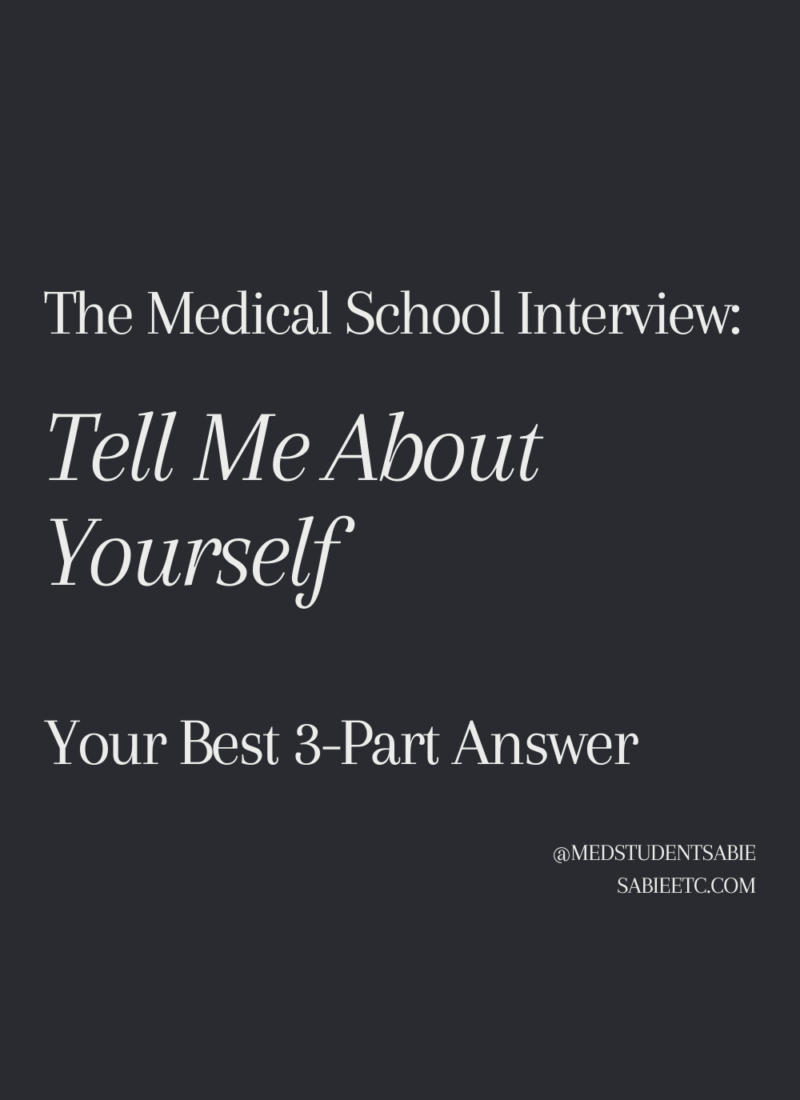With the med school applications opening up soon, I’m starting a series on the five most common mistakes to avoid when writing your Work and Activities entries. Everyone loves to emphasize the personal statement. While it is definitely important, the Work and Activities portion plays a huge role in your application. To put it into perspective, the personal statement is 5,300 characters, while the combined total for the Work and Activities section is 14,475. That’s nearly three times as many characters to tell your story! With that being said, it’s important that you use those characters right! The first common mistake to avoid is…

Mistake #1: Not Incorporating Anecdotes
For whatever reason, anecdotes are super popular in personal statements. And they should be! But they should also be used in your Work and Activities section. There’s a reason we use them in the personal statement. You’ll often find them in the introduction as a “hook.” You want to interest your reader in the W&A section too, after all, it is a long haul (refer to that character count above!). Anecdotes are useful because they help your reader build an image in their head. They are unique and engaging if written well.
To put it into perspective, the personal statement is 5,300 characters, while the combined total for the Work and Activities section is 14,475. That’s nearly three times as many characters to tell your story!
Admissions committees read thousands of applications filled with somewhat repetitive experiences. If you want yours to stick out, use an anecdote when it can add to your entry. This is especially useful for entries such as shadowing, research assistant, scribes, etc. These activities are well-known and the responsibilities should be common knowledge for your reader. Use their pre-existing knowledge to your advantage and slip a story in, instead of wasting characters explaining your job description that they already know. If you are classifying an experience as “Most Meaningful,” which you are allowed to select up to three for, I definitely recommend using a personal story in this section to help carry the reader through the relatively “longer” entry. It also helps to provide a concrete example of the reason this experience was so meaningful. Additionally there are a lot of position titles that make it very evident as to what the role entails. This is another opportunity to use anecdotes rather than spelling out what the reader can assume. Check out this example where I did just that:
Experience Name: Make-A-Wish Wish Granter
INITIAL DRAFT:
As a wish granter with the Make-A-Wish foundation, we worked with children with critical illnesses and their families to formulate their one true wish. We were privileged to serve as liaisons between the organization and the families. Our last visit with the wish recipients was the wish reveal. During these visits, we would surprise the child, bringing them gifts to supplement their wish, and reveal their wish to them. While the wish child’s excitement was priceless, the reaction of their family members was on its own so fulfilling. It was in this role that I learned when you treat an individual, you also treat the family; this is a humbling and unspoken job of being a physician.
Most people, when reading the experience name “Make-A-Wish Wish Granter,” are familiar with the Make-A-Wish Foundation and can make an educated assumption as to what this role entails. Instead of writing out what they’re already thinking, I chose to use an anecdote. See how it changed the overall tone in my final draft below:
FINAL DRAFT:
I worked with critically ill children to understand and fulfill their wishes. I was assigned a 16-year-old girl whose cancer was rapidly worsening. When we revealed she would meet the Jonas Brothers, her mouth dropped, then lifted into a big smile. I saw her parents, arms wrapped around each other and tears on their faces, and felt honored to bring comfort to them by supporting their daughter. Their joy reminded me of the multifaceted nature of medicine--despite no guaranteed cure, there is always room for hope and compassion. A year later, sitting in an ER waiting room, I saw a headline, “Girl’s cancer in remission after last-chance clinical trial.” Instantly, I recognized her smile.
In this example, the addition of the anecdote helped to illustrate my experience with the organization and demonstrate qualities like compassion, empathy, desire to support others, as well as what this experience taught me about medicine. The paragraph is overall more readable, more unique, and most importantly, memorable. So to reiterate, anecdotes are a great way to deliver your experience entry if:
1. It’s a common experience and the admissions committee should have a general understanding of your responsibilities.
2. The experience is selected as one of your “Most Meaningful.”
3. Your role can be reasonably assumed based on your “experience name.”
I hope that helps you see how you can use personal stories and encounters to make your entries more engaging and unique to your experiences. Still have questions about when to use anecdotes in your Work & Activities Section? Leave them in the comments below!










Leave a Reply